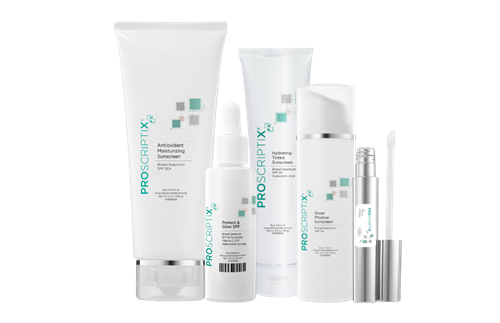 Best Ways to Stay Safe in the Summer Sun
Best Ways to Stay Safe in the Summer Sun
July is UV Safety Month
As beaches open again, social distancing is not the only precaution you need to take to keep you and your loved ones safe while having fun in the summertime sun.
The sun’s harmful UVA (aging) and UVB (burning) rays can cause sunburns, sun damage including dark spots, wrinkles and sagging skin, and skin cancer.
Since skin damage caused by exposure to the sun is cumulative, your hours in the pool without reapplying your sunscreen as a child, or that painful sunburn you got during your spring break, will have an impact on your skin for many years to come.
So, what do dermatologists say can help protect you from the sun?
Good sun care starts with owning a good sunscreen.
The American Academy of Dermatology recommends everyone use sunscreen whenever they are outdoors that offers the following:
- Broad-spectrum protection (protects against UVA and UVB rays)
- SPF 30 or higher
- Water resistance
Chemical and physical sunscreens protect your skin differently and contain different active ingredients. Here’s a summary of the basic differences:
- A chemical sunscreen: Protects you by absorbing the sun’s rays. May contain one or more of many possible active ingredients, including oxybenzone or avobenzene.
- A physical sunscreen: Protects you by deflecting the sun’s rays. Contains the active ingredients titanium dioxide and/or zinc oxide.
If you are using sunscreen every day and in the correct amount, a bottle should not last long. If you find a bottle of sunscreen that you have not used for some time, here are some guidelines you can follow:
- The FDA requires that all sunscreens retain their original strength for at least three years.
- Some sunscreens include an expiration date. If the expiration date has passed, throw out the sunscreen.
- If you buy a sunscreen that does not have an expiration date, write the date you bought the sunscreen on the bottle. That way, you’ll know when to throw it out.
- You also can look for visible signs that the sunscreen may no longer be good. Any obvious changes in the color or consistency of the product mean it’s time to purchase a new bottle.
Sunscreen is just the first step in protecting from harmful UV rays
- Seek shade when appropriate, remembering that the sun’s rays are strongest between 10 a.m. and 2 p.m. If your shadow is shorter than you are, seek shade.
- Dress to protect yourself from the sun by wearing a lightweight long-sleeved shirt, pants, a wide-brimmed hat and sunglasses, whenever possible.
- Use extra caution near water and sand as they reflect the damaging rays of the sun, which can increase your chance of sunburn.
- Get vitamin D safely through a healthy diet that may include vitamin supplements if necessary.
- Avoid exposing babies younger than six months to the sun’s rays. Keep them in the shade as much as possible, dress them in long sleeves, pants, a wide-brimmed hat and sunglasses. Make sure they do not get overheated and that they drink plenty of fluids. If possible, sunscreen use should be avoided in babies younger than six months.
- Avoid tanning beds. Ultraviolet light from the sun and tanning beds can cause skin cancer and wrinkling. If you want to look tan, you may wish to use a self-tanning product, but continue to use sunscreen with it.
- Check your birthday suit. Skin cancer is the most common cause of cancer in the US, and the best way to find it early is to schedule an annual Total-Body Skin Cancer Exam. If you notice any spots or moles that are changing, itching, or bleeding on your skin, see one of our board-certified dermatologists right away. Skin cancer, even Melanoma – the deadliest form – is highly treatable when caught early.
Advanced Dermatology-Recommended Sun Care Products
To learn more about all of our sun care and skincare products, book an appointment to talk with a member of our cosmetic dermatology team by calling 800.647.9851.

Or visit our Online Dermatology Shop for dermatologist-recommended sunscreen and skin and hair care products.